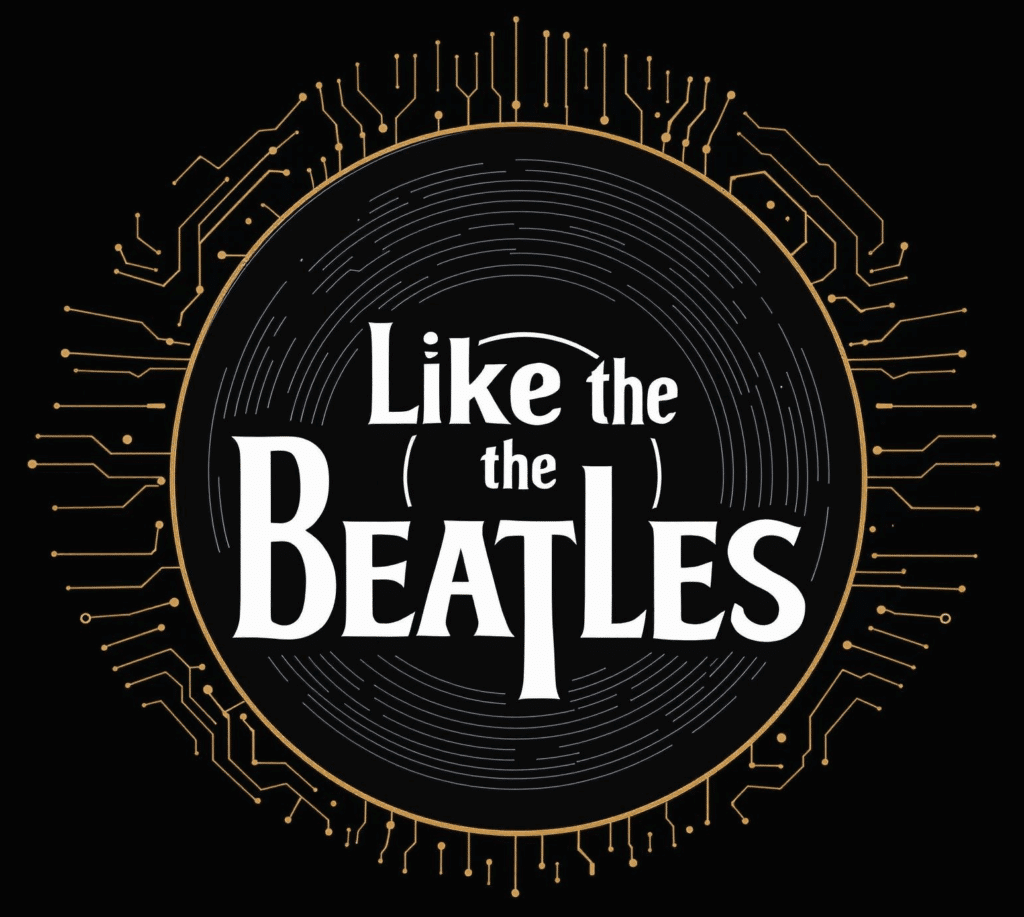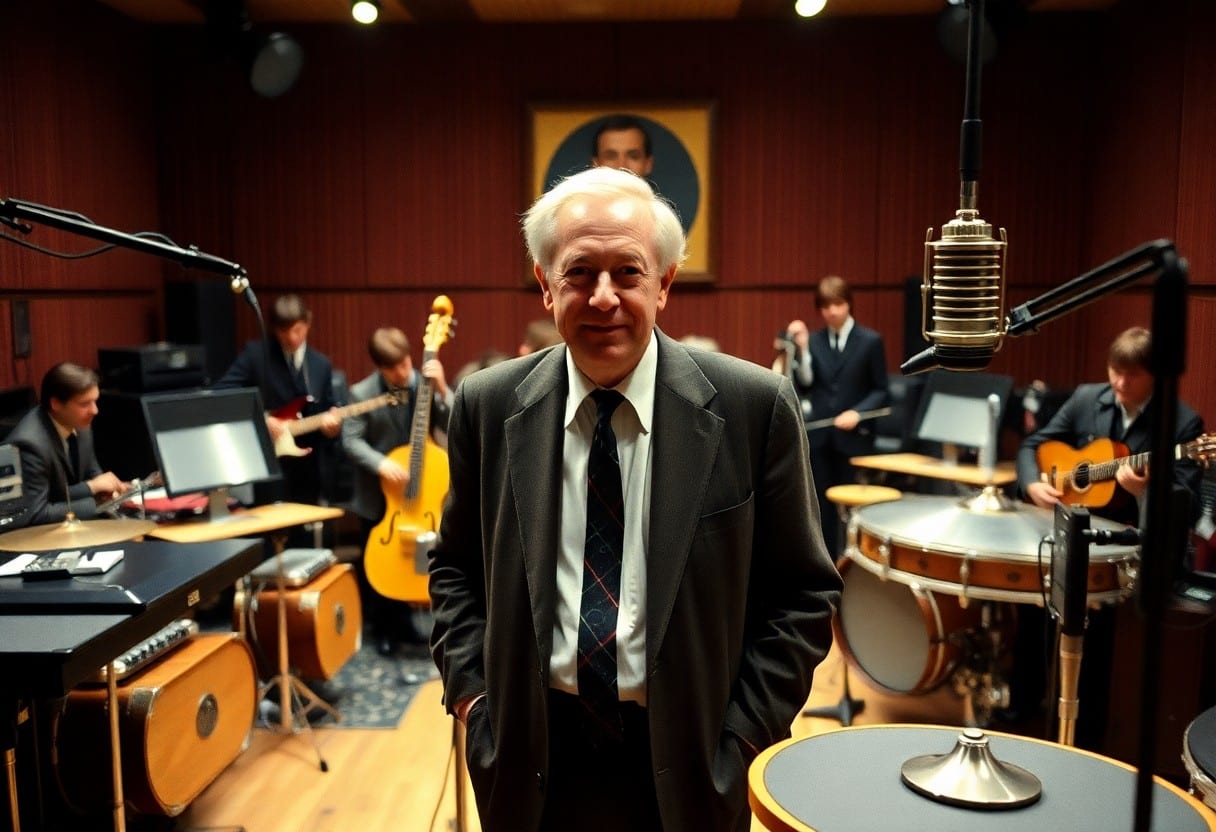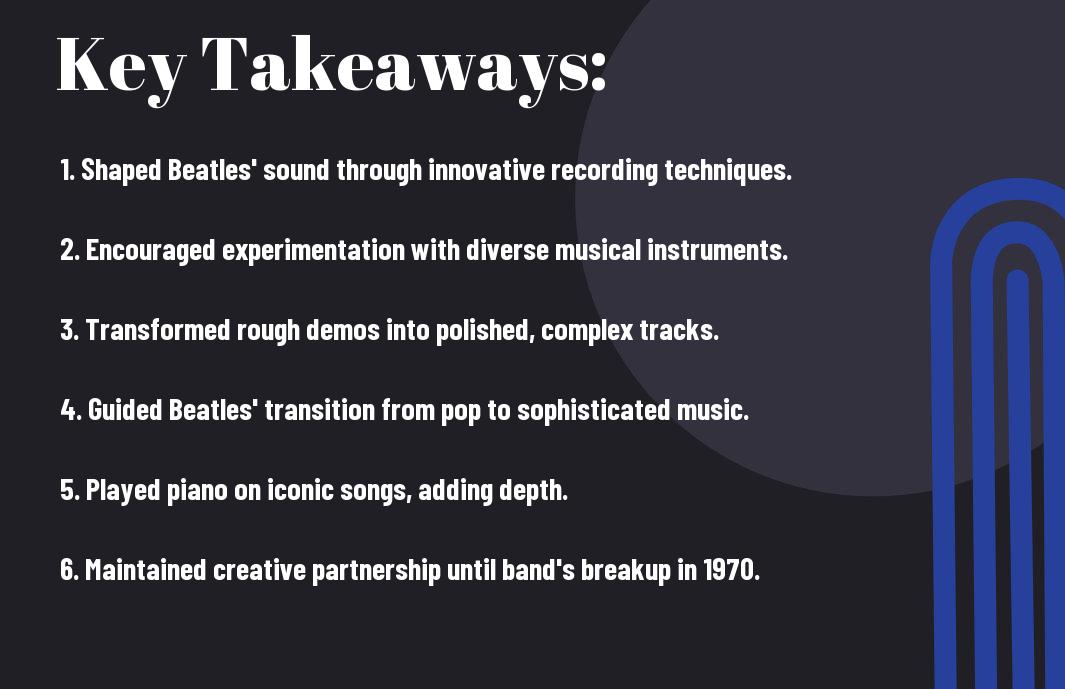George Martin, often referred to as the “Fifth Beatle,” played a transformative role in shaping the unique sound of The Beatles from their earliest recordings to their final albums. I want to explore how his innovative production techniques and musical arrangements contributed not only to their unprecedented success but also to their evolution as artists. You’ll discover how Martin pushed the band to experiment with new sounds, leading to the creation of iconic tracks that continue to resonate with audiences today.
Early Collaborations
The Beatles’ early collaborations with George Martin laid the foundation for their innovative and distinctive sound. As their producer, Martin brought not only his musical expertise but also a deep understanding of studio technology, which was instrumental in shaping the band’s artistic direction. His influence would become more pronounced as their music evolved, pushing the boundaries of popular music during the 1960s.
The Beatles’ Initial Sound
After forming in the early 1960s, The Beatles initially embraced a straightforward rock and roll sound, heavily influenced by skiffle, rhythm and blues, and pop. Their early singles reflected this approach, characterized by catchy melodies and vocal harmonies. However, it was their partnership with George Martin that began to expand their sonic palette and introduce more complexity into their recordings.
George Martin’s Production Techniques
Around the time they began working together, George Martin implemented innovative production techniques that would revolutionize The Beatles’ music. His ability to combine various elements of classical, jazz, and pop music allowed the band to experiment with new sounds, enriching their compositions. Martin’s creative use of multi-track recording and the incorporation of unconventional instruments transformed their approach to songwriting and performance.
George was pioneering in his use of studio technology, which greatly enhanced The Beatles’ sound. He introduced overdubbing and tape loops, enabling the band to layer their vocals and instruments in ways that added depth and texture. Martin encouraged the group to embrace musical experimentation, leading to groundbreaking songs like “Tomorrow Never Knows” and “A Day in the Life.” His willingness to push artistic boundaries created an environment where The Beatles could thrive creatively, shaping the direction of modern music in the process.
Innovative Arrangements
It is undeniable that George Martin’s innovative arrangements played a pivotal role in shaping The Beatles’ sound. His ability to blend various musical styles and enhance their compositions with intricate details elevated the band’s music from simple pop tunes to complex masterpieces. The lush orchestrations and thoughtful arrangements opened up new avenues for creativity, pushing the band to explore uncharted territories in their sound.
String Quartets and Orchestration
String arrangements became a hallmark of The Beatles’ evolving sound, with Martin often incorporating string quartets into their tracks. This added a layer of sophistication that transformed songs like “Yesterday” into timeless classics. By skillfully weaving strings with the band’s harmony, Martin heightened the emotional depth of their music.
Experimentation with Sound Effects
One of the hallmarks of George Martin’s impact was his encouragement of experimentation with sound effects. He introduced the band to various recording techniques and unconventional audio elements, enhancing their musical vocabulary and creativity.
This experimentation was pivotal, as it allowed The Beatles to explore new dimensions in their music. For instance, the use of tape loops in “Tomorrow Never Knows” and the backward guitar solos in “I’m Only Sleeping” showcased a willingness to push boundaries. By creating innovative soundscapes, Martin helped The Beatles craft a distinct identity, transforming popular music while influencing countless artists. His understanding of technology and sound, combined with their creative genius, resulted in a revolutionary era of music that continues to inspire.
Album Milestones
Many fans of The Beatles recognize the profound influence that George Martin had not only on their sound but also on their artistic evolution through various album milestones. Each album marked a significant step in their journey, shaped meticulously by his innovative production strategies, which allowed the band to explore new genres and intricate arrangements.
“Rubber Soul” and Musical Maturity
Around the time of the release of “Rubber Soul,” I noticed a notable shift in The Beatles’ sound. This album showcased their growing musical maturity, with deeper lyrical themes and more sophisticated instrumentation, in part due to Martin’s guidance.
“Sgt. Pepper’s Lonely Hearts Club Band” Revolution
Lonely hearts might not have expected the transformative experience that “Sgt. Pepper’s Lonely Hearts Club Band” would bring. It was a landmark album that changed the landscape of music itself.
Consequently, the album introduced bold experimentation, such as the use of non-traditional instruments and studio effects, which became defining characteristics of the rock genre. I think it’s amazing how Martin pushed the envelope, allowing The Beatles to craft a concept album that elevated music to an art form. The incorporation of elements like orchestral arrangements and soundscapes contributed to an immersive experience, transforming listeners’ expectations of what an album could achieve. It wasn’t just a collection of songs; it was a vibrant tapestry of sound and storytelling, marking a turning point in popular music history.
The Shift in the Beatles’ Sound
Once again, George Martin played an imperative role in the Beatles’ transformation from a straightforward pop band to a multi-faceted musical force. As the band’s sound evolved, Martin’s innovative production techniques and willingness to experiment opened up new avenues for the Beatles, offering them the chance to explore different genres and artistic expressions that helped define their legacy.
From Pop Sensation to Artistic Innovators
Behind this evolution was a concerted effort by the Beatles to break away from their early image as mere pop idols. With Martin’s guidance, they began to incorporate a variety of musical styles, sophisticated lyrical themes, and bold arrangements that propelled them into serious artists.
George Martin as a Creative Partner
Between the studio sessions and the innovative sounds emerging, George Martin’s partnership with the Beatles became a defining aspect of their journey. He was not just a producer but also a arranger, a mentor, and a collaborator who pushed the band to experiment with sounds and ideas that shaped their future records.
Sound exploration was the order of the day during their collaboration. I found that Martin’s ability to suggest unconventional instruments, like the string quartet in “Yesterday,” added depth and complexity to their music. He also encouraged the Beatles to experiment with studio techniques, embracing non-traditional methods such as backward recordings and overdubbing. This led to groundbreaking tracks like “Tomorrow Never Knows,” where the use of electronic effects and intricate layering showed that the Beatles were no longer just a band but pioneers in the music landscape. Together, they forged a sound that was both revolutionary and timeless, elevating popular music into a new artistic realm.
The Later Years
After the Beatles transitioned from their early pop sound to more experimental music, George Martin’s influence became increasingly profound. His innovative arrangements and willingness to embrace new technology helped shape tracks like “Strawberry Fields Forever” and “A Day in the Life.” I often wonder, How has George Martin’s history affected you? His contributions were not merely technical; they were deeply artistic as well, elevating the band to new heights.
Challenges and Artistic Differences
Among the various challenges they faced, artistic differences between the Beatles members and George sometimes led to tensions in the studio. I believe these disagreements reflected a natural evolution of their creative process, as they sought to explore new musical territories while balancing their distinct visions. These conflicts highlighted the growing complexity of their artistic relationship.
Final Albums and Legacy Contributions
Below the surface, Martin’s role in the Beatles’ final albums was pivotal. His meticulous approach ensured that every detail was polished, allowing the band to experiment boldly. The soundscapes in “Abbey Road” and “Let It Be” owe much to his direction, emphasizing harmony and innovation.
Hence, his lasting legacy can be seen in not just the songs themselves but in the very essence of how the Beatles approached their artistry. Martin’s vision and mastery transformed their music into complex tapestries, giving rise to an era of rock that prioritized experimentation and creative freedom. This foundational shift continues to inspire countless artists today, illustrating the profound impact of his contributions.
The Impact Beyond The Beatles
For many, George Martin was the architect of The Beatles’ incredible sound, but his influence extended far beyond the Fab Four. His innovative production techniques and artistic vision opened doors for countless musicians and shaped the music industry as a whole. As artists began to explore new sonic landscapes, Martin’s legacy fostered a culture of experimentation that continues to thrive today.
Influence on Future Artists
Among the myriad musicians who have cited George Martin as an inspiration, many have adopted his willingness to push boundaries and embrace unconventional methods. From rock to pop, Martin’s influence is evident in the works of artists like David Bowie, Elton John, and later acts such as Radiohead. His pioneering spirit has motivated generations to explore new horizons in their own music.
Lasting Effects on Music Production
Behind the scenes, George Martin revolutionized music production with technological innovations and artistic collaborations that reshaped the industry. This profound impact includes a shift away from traditional recording practices to embracing multi-track recording and orchestration, allowing for more complex arrangements. His work laid the groundwork for modern music, inspiring producers to explore new techniques that foster creativity. This advancement continues to resonate in today’s music, where the fusion of genres and innovative sounds are commonplace, showcasing a legacy that has undeniably enriched the auditory landscape.
To Wrap Up
Summing up, I believe George Martin’s influence on The Beatles’ sound was profound and transformative. From their early days in Hamburg to their groundbreaking albums like “Sgt. Pepper’s Lonely Hearts Club Band,” he pushed the band to explore new musical ideas and technologies. You can hear his guidance in their innovative arrangements and studio techniques. As a producer, he helped shape their identity, making their evolution from pop sensations to artistic pioneers possible. Without Martin, it’s hard to imagine The Beatles achieving the unparalleled heights they did during their illustrious career.












